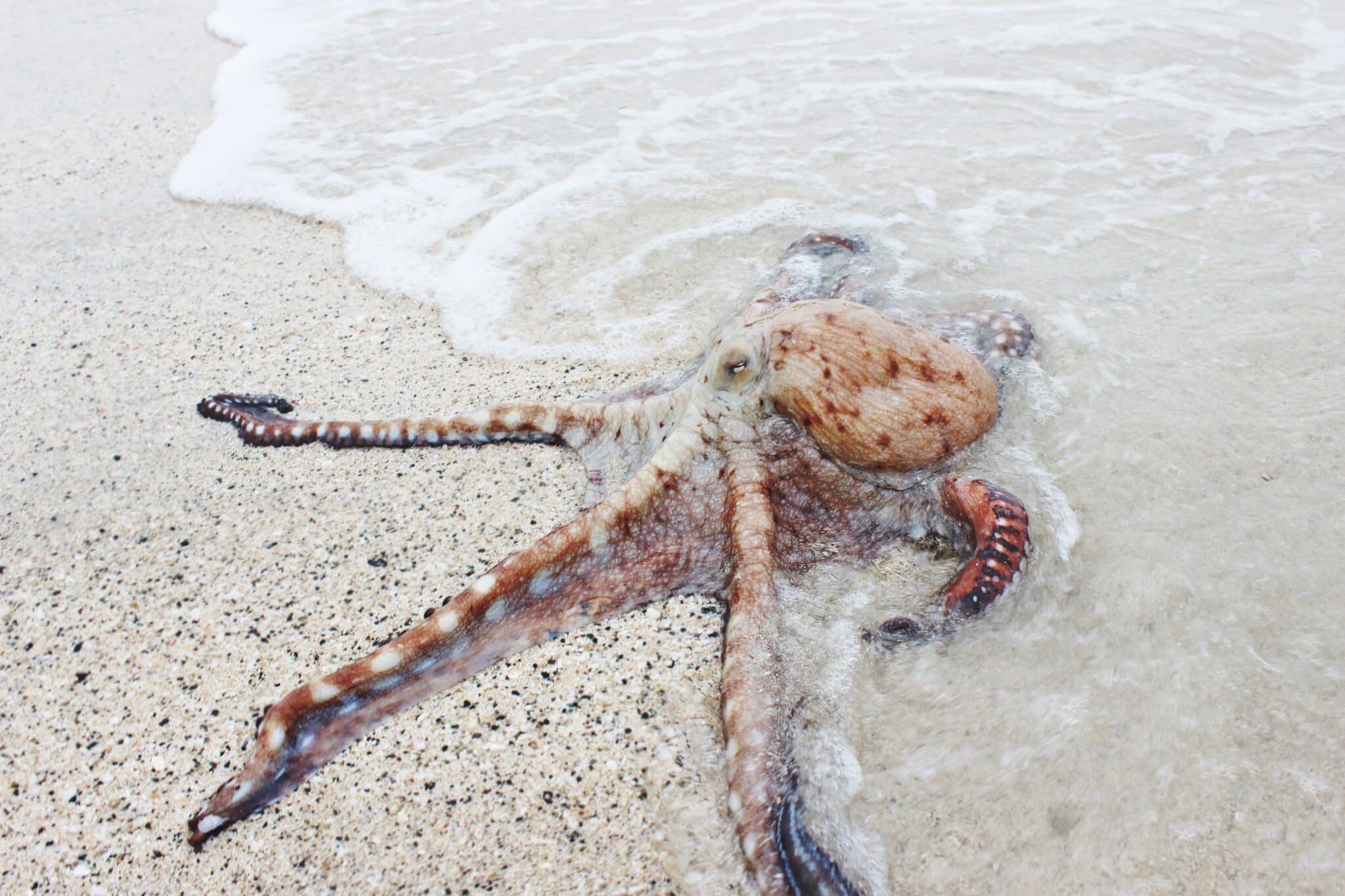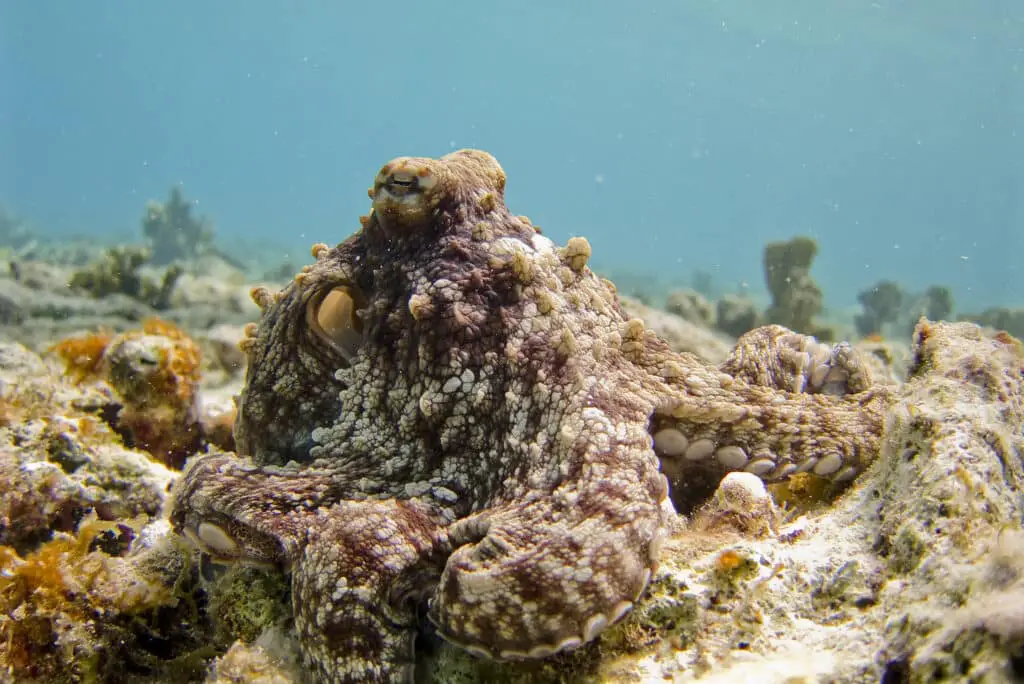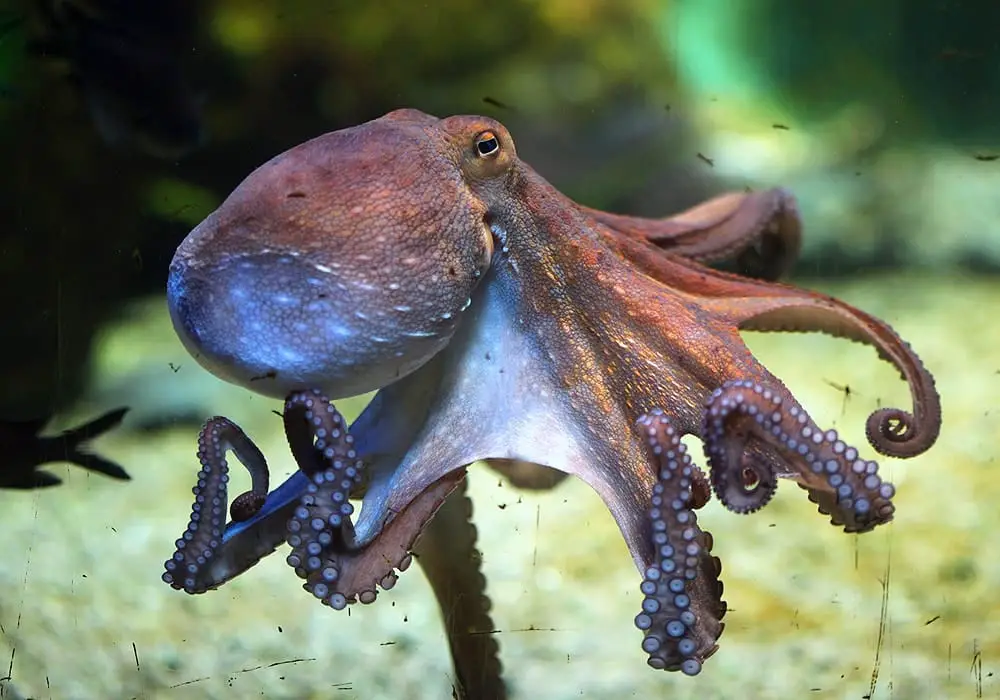How Strong Is An Octopus

Introduction
How Strong Is An Octopus: The octopus, a fascinating and enigmatic creature of the deep, has long captured the imagination of scientists and nature enthusiasts alike. Renowned for its intelligence and incredible adaptability, the octopus possesses a remarkable set of characteristics, one of which is its undeniable strength.
At first glance, an octopus might not seem like a powerhouse of the sea. Unlike its more conspicuous and robust counterparts, such as sharks or dolphins, the octopus lacks a rigid skeleton and imposing musculature. Instead, its body is soft and pliable, which might lead one to underestimate its physical abilities.
However, the true strength of an octopus lies in its astonishingly dexterous and versatile arms. Each of its eight appendages is equipped with a complex network of muscles, capable of both fine motor control and formidable strength. These arms are lined with hundreds of suckers, each possessing an incredible grip. An octopus can use its arms not only for capturing prey but also for opening jars, manipulating objects, and even camouflaging itself by altering its texture and color.
To understand just how strong an octopus is, we must delve into the biomechanics of its arms, exploring the science behind its grip and the surprising power it can exert. This exploration will unveil the hidden capabilities of this oceanic marvel, shedding light on its impressive strength and the secrets of its underwater world.

How strong is an octopus compared to a human?
Octopuses are regarded as quite strong for their size. They’re capable of lifting objects many times their own body weight. A giant Pacific octopus can easily overpower a man.
Comparing the strength of an octopus to that of a human reveals a striking contrast in physical capabilities. While humans are known for their significant muscular strength, octopuses employ a different strategy altogether.
Octopuses lack the rigid skeletal structure that humans possess, making direct strength comparisons challenging. However, in terms of proportionate strength, octopuses are remarkably powerful. Their soft, flexible bodies house an array of strong muscles, particularly within their eight arms. These arms are not only incredibly dexterous but also equipped with hundreds of suction cups, each capable of a strong grip.
Octopuses primarily use their strength for hunting and capturing prey in the water, where their fluid movements and suction-cup-enhanced grip give them a significant advantage. In contrast, humans rely on their skeletal system and powerful muscles for tasks like lifting heavy objects and performing feats of endurance.
While an octopus may not outmuscle a human in an arm-wrestling contest, its strength is uniquely adapted to its aquatic environment. This highlights the beauty of evolution, where different species have evolved distinct strengths tailored to their survival needs and habitats, making the octopus a fascinating example of nature’s diversity and ingenuity.
Can an octopus overpower a human?
A giant Pacific octopus—the largest of the world’s 250 or so octopus species—can easily overpower a person. Just one of a big male’s three-inch-diameter suckers can lift 30 pounds, and a giant Pacific has 1600 of them.
An octopus, despite its remarkable underwater strength and agility, generally cannot overpower a human in a direct physical confrontation. Octopuses are designed for life in the ocean, and their strength is optimized for capturing prey, maneuvering through the water, and defending against potential threats within their underwater realm.
However, there are several factors to consider. First, octopuses are highly intelligent and resourceful creatures, known for their problem-solving abilities. In certain situations, they might employ strategies such as camouflage, ink release, or swift escape to avoid a human rather than engage in direct combat.
Second, octopuses have powerful arms equipped with numerous suckers, which can deliver a strong grip. While they may not overpower a human in sheer physical strength, if an octopus were to latch onto a person’s skin or clothing, it could be challenging to remove without causing harm to the animal.
In general, interactions between octopuses and humans should prioritize the well-being and conservation of these fascinating creatures. It’s essential to treat them with respect and observe them in their natural habitat, appreciating their incredible strength and intelligence from a safe and responsible distance.
Could I beat an octopus in a fight?
Finally, there is the simple math: as filmmaker Mike deGruy says, as a human, you’re never going to win an arms race with an octopus. Although octopuses usually go after prey smaller than themselves, they can use their strength to overpower substantial adversaries, including sharks.
Engaging in a fight with an octopus is neither ethical nor practical. Octopuses are marine creatures, adapted to life in water, and have evolved a unique set of skills and characteristics for their survival. Attempting to “fight” an octopus would not only be detrimental to the animal but also potentially harmful to yourself.
Octopuses, despite their soft and seemingly delicate appearance, possess remarkable attributes like powerful, flexible arms armed with numerous suction cups. These arms are designed for tasks like capturing prey, navigating the complex underwater environment, and defending against threats in their natural habitat.
Humans, on the other hand, are terrestrial creatures with an entirely different anatomy and skillset. Engaging in a physical confrontation with an octopus is not only ethically questionable but also likely to end in injury to the octopus, as well as potentially to the human.
Rather than considering a hypothetical fight with an octopus, it’s more responsible and educational to appreciate these fascinating creatures from a respectful distance in their natural environment, while seeking to understand and protect the incredible diversity of life that inhabits our oceans.
How strong is the grip of an octopus?
The Giant Pacific Octopus’s larger suckers, near the beak and mouth, can hold up to 35 pounds! They are used to pry open and obliterate clams, crabs, and other sea life that should, and would, be hard to eat under normal circumstances. That’s one powerful grip!
The grip of an octopus is a marvel of nature, showcasing both finesse and power. Octopuses possess a set of remarkably strong and flexible arms, each lined with numerous suction cups that enable them to interact with their environment in extraordinary ways.
The strength of an octopus’s grip is surprisingly formidable. Each sucker on an octopus’s arm is equipped with muscular rings that can contract and create a vacuum-like seal when pressed against an object. This vacuum seal allows the octopus to firmly attach to various surfaces, including rocks, prey, or even smooth underwater equipment.
When an octopus latches onto something, it can generate a substantial holding force. This gripping power is essential for capturing prey, such as fish and crustaceans, which may attempt to escape. Additionally, octopuses use their powerful grip to navigate through complex underwater terrain and manipulate objects in their environment.
The exact strength of an octopus’s grip can vary among species and individuals, but it’s safe to say that it is more than sufficient for their needs in the underwater world. It’s a testament to the remarkable adaptations that have evolved in these intelligent and agile cephalopods, allowing them to thrive in their underwater ecosystems.
Do octopus bites hurt?
Octopus bites can cause bleeding and swelling in people, but only the venom of the blue-ringed octopus (Hapalochlaena lunulata) is known to be deadly to humans.
Octopus bites can be painful. While octopuses are not typically aggressive towards humans and tend to use their venom primarily for hunting prey, a bite from certain species can cause discomfort and pain. The severity of the bite depends on factors such as the species of octopus, the size of the individual, and the location of the bite.
The venom of an octopus contains various toxins that are used to immobilize and subdue their prey. These toxins can cause localized pain, swelling, and in some cases, even muscle weakness or paralysis. Additionally, the bite site may become red and inflamed, and there might be a risk of secondary infection if the wound is not properly cleaned and treated.
These creatures are generally not aggressive towards humans unless they feel threatened or cornered. To avoid a potential bite. If someone does get bitten by an octopus, seeking medical attention promptly is advised to ensure proper care and treatment.
How is an octopus strong?
On the contrary, octopus arms (and their suckers) are very strong. Octopuses don’t have bones, and they don’t need them, either! But they do have muscles—many muscles, especially in those eight amazing arms (and everywhere else, too!).
An octopus possesses astonishing strength, primarily derived from its remarkable musculature and unique physiology. Its strength lies in its arms, which are densely packed with thousands of individually controlled suckers. Each sucker is equipped with powerful muscles that allow the octopus to grip, manipulate objects, and exert force with impressive precision.
The octopus’s ability to change the shape and rigidity of its body grants it exceptional adaptability. It can alter its form to navigate through tight spaces, squeeze through narrow openings, and even camouflage itself from predators or prey. This dynamic flexibility arises from a combination of a hydrostatic skeleton, which uses fluid pressure to support and move the body, and a lack of a rigid skeletal structure.
Additionally, the octopus’s nervous system is highly developed, with a complex array of neurons distributed throughout its arms. This distributed nervous system enables each arm to function semi-autonomously, allowing the octopus to perform multiple tasks simultaneously. This multitasking capability further contributes to its perceived strength and agility.
The octopus’s strength arises from a harmonious interplay of advanced musculature, a flexible body structure, and an intricate nervous system. This amalgamation of biological marvels grants the octopus an extraordinary level of adaptability and prowess in its underwater realm.
How do octopuses use their strength in the wild?
In the wild, octopuses employ their exceptional strength in a myriad of ingenious ways to survive, hunt, and navigate their complex underwater environments. Their muscular arms, equipped with thousands of suckers, are the primary instruments through which they wield this power.
For hunting, an octopus’s strength is indispensable. When stalking prey, it uses its arms to stealthily approach and then swiftly pounce, enveloping the target in a tight embrace of powerful suckers. The strength of these suckers ensures that once grasped, escaping becomes nearly impossible for the prey.
Moreover, octopuses use their strength for intricate feats of manipulation. They can open and dismantle shells, unscrew lids, and untangle nets with surprising dexterity. This versatility enables them to access hidden prey and secure shelter in tight spaces.
Their strength also plays a crucial role in evading predators. When threatened, an octopus might employ a swift burst of jet propulsion, generated by forcefully expelling water through its siphon. This allows them to make a hasty getaway and seek refuge in a secure crevice or den.
In terms of defense, octopuses have developed fascinating techniques. Some species, such as the mimic octopus, can contort their bodies and use color-changing abilities to impersonate other, more venomous creatures, effectively deterring potential threats.
How do octopuses control the strength of their arms?
Octopuses have evolved a remarkable and sophisticated system to control the strength and movements of their arms, making them incredibly agile and adaptable underwater hunters. This system relies on a combination of muscle contractions and the intricate structure of their arms.
At the core of this control system are thousands of tiny muscles within each arm. These muscles run both longitudinally and circularly along the arms, providing the octopus with fine motor control over their movements. When the octopus decides to reach out, these muscles contract, causing the arm to extend. Conversely, when it wants to retract or bend the arm, different sets of muscles are engaged.
The secret to their precise control lies in the neural networks within their arms. Octopuses have a highly developed and decentralized nervous system, which allows for a significant degree of autonomy in each arm. This means that an octopus can perform complex tasks with one arm while the others may be engaged in different activities simultaneously.
Additionally, the suckers lining their arms play a crucial role. By manipulating the tension in the muscles around the suckers, octopuses can control the strength of their grip. They can choose to exert a powerful grip when capturing prey or holding onto rocks and surfaces, or they can employ a gentler touch for more delicate tasks, such as exploring crevices or handling objects.
In essence, octopuses’ extraordinary control over their arms combines their muscular structure, neural complexity, and the unique function of their suckers to make them masters of dexterity and strength in the underwater world.

Conclusion
The octopus stands as a testament to the wonders of nature and the incredible diversity of life in our oceans. While its strength may not be immediately apparent due to its soft and pliable body, a closer examination of its remarkable arms reveals a hidden powerhouse.
The octopus’s arms, with their intricate muscular structure and hundreds of suckers, demonstrate a level of strength and dexterity that few other creatures can match. These attributes are not just essential for capturing prey but also for navigating the complex underwater environment, manipulating objects, and even engaging in problem-solving tasks. The octopus’s adaptability and resourcefulness further underscore its extraordinary capabilities.
Studying the strength of an octopus not only deepens our appreciation for the complexities of marine life but also offers insights into bio-inspired engineering and robotics. Researchers continue to draw inspiration from the octopus’s unique abilities to design more agile and flexible robotic systems.
In the grand tapestry of the natural world, the octopus reminds us that strength comes in various forms, often defying our preconceived notions. As we strive to protect and conserve our oceans and their inhabitants, the octopus serves as a symbol of the untapped potential and mysteries that lie beneath the waves, inspiring us to continue exploring and preserving the wonders of the deep.



